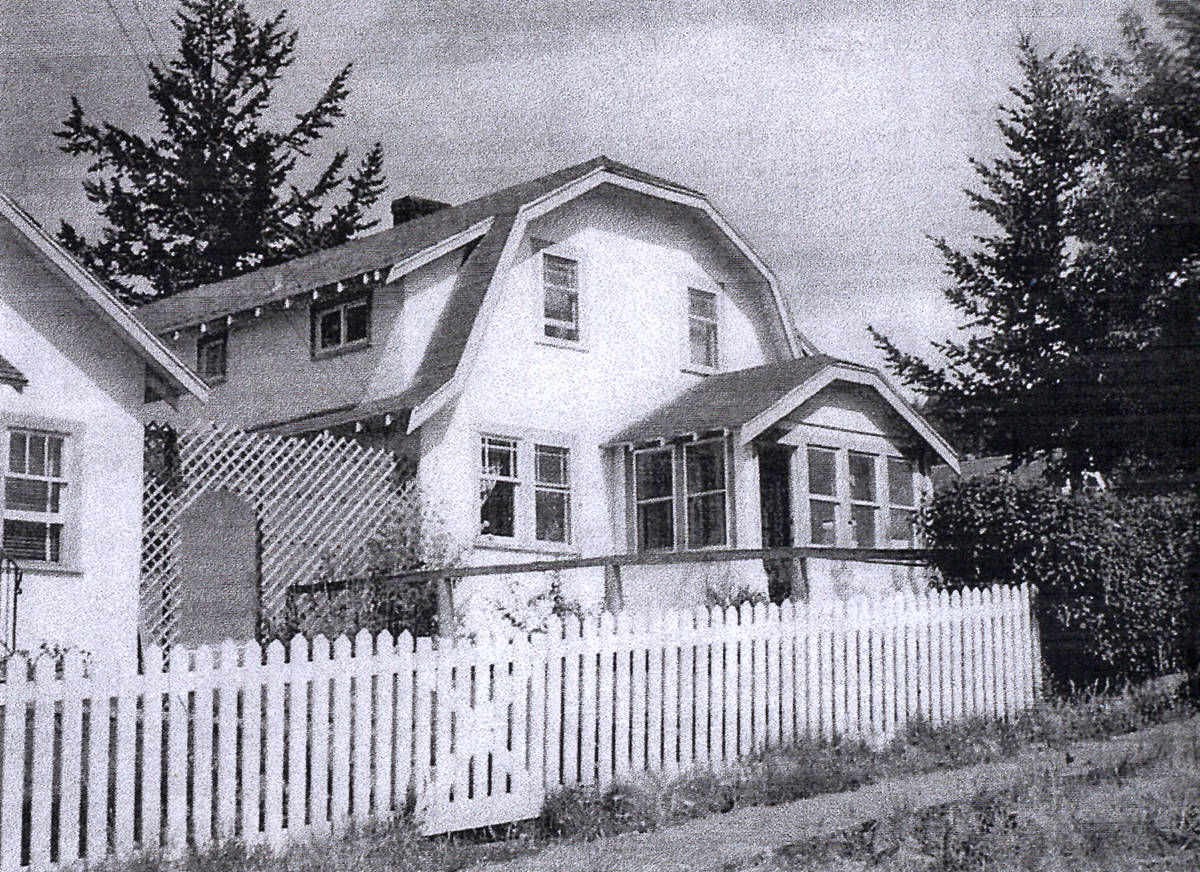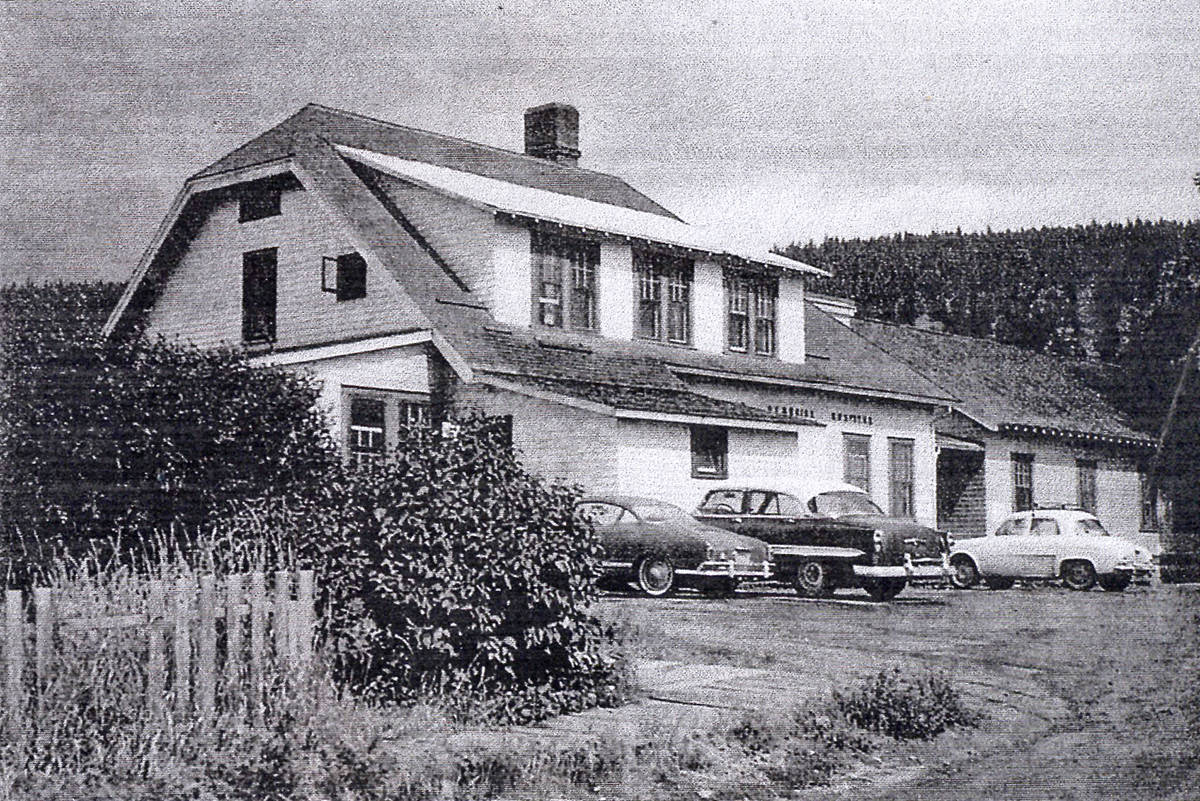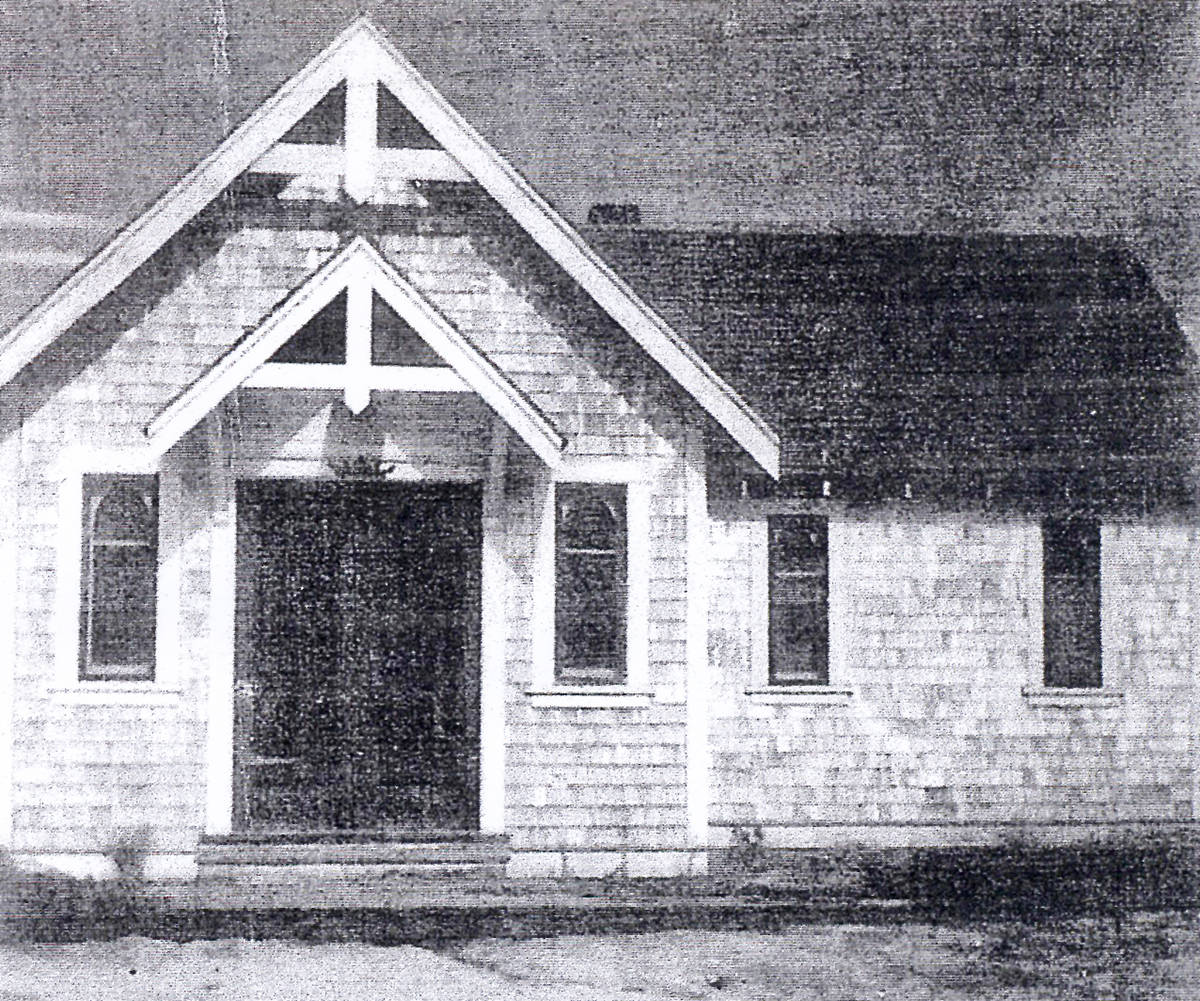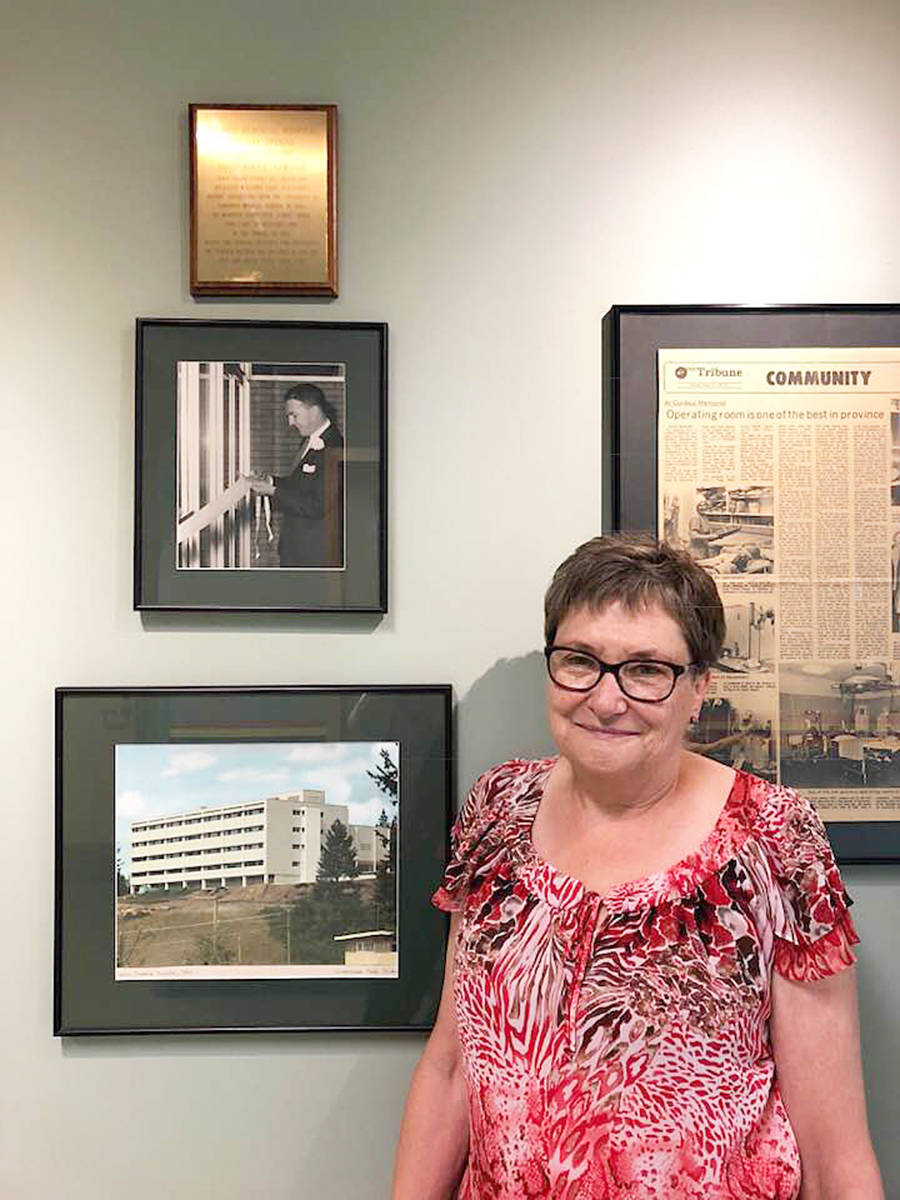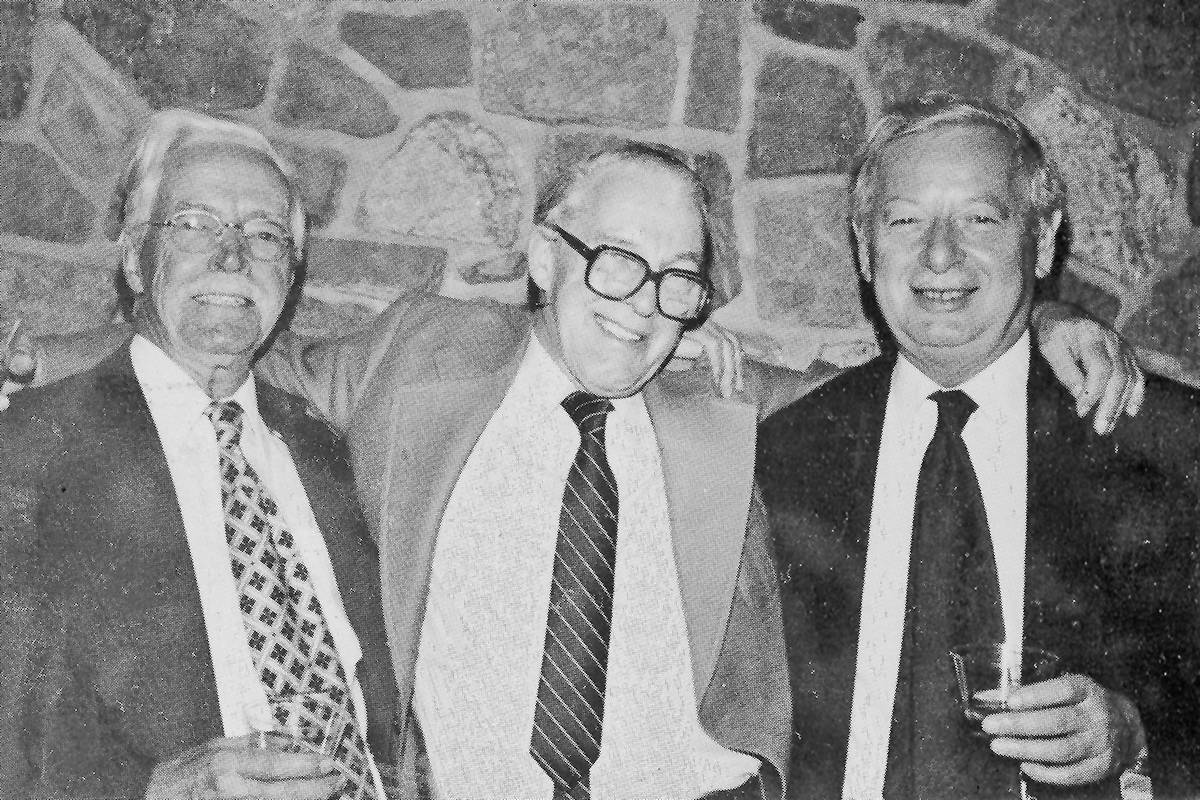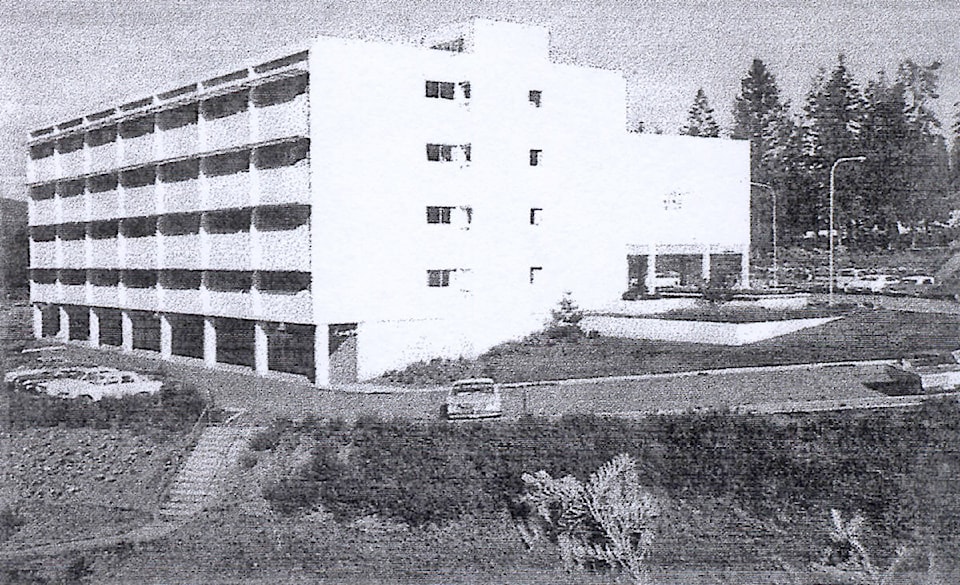Barry Sale
Casual Country 2018
For these history articles about the Williams Lake hospitals, I have relied heavily upon the writings of Dr. John Roberts, Irene Stangoe, past articles from the Williams Lake Tribune, and the Cariboo Memorial Hospital Employees from their 2010 memoir: Chicken Stew.
The First Hospitals in Williams Lake
The very first hospital in Williams Lake wasn’t a hospital at all.
It was more of a drop in clinic, run by Mrs. George Goodrich, who had moved to town with her husband in 1921. Located in a large house next to the old Pinchbeck gristmill down beside the Williams Lake Creek, it was the only medical facility during the first year and a half of the town’s existence.
There’s a story that the PGE Railway had offered a free lot to the first white child born in Williams Lake.
When Roland Dodwell was born in the clinic shortly after it opened, his parents thought they had won a lottery, however, after checking, the PGE determined that the gristmill and the house next to it were not within the official town boundaries, so the Dodwells were out of luck.
A “proper” two-bed hospital and first aid station was opened early in 1923. It was operated by a young registered nurse, Miss Nora Weetman, and was located on Oliver Street in a building where the “Boot” cabaret is today.
Her first patient was Charlie Moon, who had cut his hand quite badly. Back in those days, stitches were done without anesthetic.
Nora’s hospital served the community until 1925, when the grand new War Memorial Hospital was built.
Funding the new hospital was a real community effort. In the 1920s, government support for hospitals was virtually nonexistent, so very early on, the community began fundraising.
Whist drives, dances and plays were constantly being staged to raise money.
As early as 1920, the Bank of Commerce manager writes about a fundraising dance and weekend gambling event to raise money for the hospital.
He describes the gamblers betting “anything anywhere; on tables or on the floor, trading away horses, saddles, accoutrements, fur coats, etc.”
The big dance began at midnight “when a train came in bringing a number of outsiders and a generous supply of liquor.”
When the fights started, “one man had to be ejected, and when the crowd followed him out, the doors were locked.”
He goes on to state that “Everybody had a pleasant time and we think this will be good advertisement for Williams Lake.”
That event cleared $275 for the hospital fund.
The Hospital Auxiliary was organized in 1923. Nearly every white woman in Williams Lake was involved in those early days. They raised money to provide basic furnishings for the hospital and they would take the washing home and do it in their own homes.
They also purchased bolts of cloth, and using treadle sewing machines and sad irons (heated on stoves) they made up sheets, pillowcases, gowns, and baby diapers.
The Auxiliary has been in continuous existence now for 95 years, except for a two-year period in 1928 and 1929.
People in the community donated vegetables from their gardens, and the hospital itself had its own gardens. One of the very successful drives was called Pound Day.
Each year, on National Hospital Day, residents donated everything from foodstuffs to garden produce to linens to money towards the operation of the hospital.
The thing was, everything donated had to be in pounds — pounds of vegetables, pounds of cloth, money in pounds sterling. This annual event began as a fundraiser to build the new hospital and continued until the 1950s when the government finally started funding hospital services.
Another fundraising method was the hospital orchestra.
During the 1920s and into the 1930s the hospital had its own group of musicians who donated their services and turned over their profits ($50 per event) to the building fund.
By 1924, people were getting serious about building a new hospital.
A Hospital Board of five members was formed, and they began putting pressure on the PGE, which owned all the land surrounding the town, for a suitable site.
As the story goes, the board took the PGE agent, Bob Wark, up Oliver Street and pointed to a hill south of town. They told him they wanted five acres there for the new hospital.
Wark was reluctant, saying there was no way the railway would give the land to the town.
However, after some difficult negotiations, a deal was struck and the five acres of land was sold to the town for a dollar.
The hospital was built on the hill “way out of town,” exactly where our city hall sits today.
It was a large, single-storied wooden building with a cedar shake exterior. There was one private room and two small wards downstairs, with two wards and a veranda upstairs.
It cost $11,050 to build and it was named the War Memorial Hospital.
That name was chosen because of a substantial contribution from the community of Soda Creek, which had been raising money to build a cenotaph to honour their fallen soldiers from the First World War.
It had become evident that Soda Creek was in decline, and its residents felt that a more fitting memorial would be to contribute to the new regional hospital in Williams Lake.
Over the years, as the community grew, so did the hospital.
In 1934, a 17-bed wing was added. The war years were difficult in terms of staffing.
In 1942 the hospital had to close for a period when the only doctor left town. Support staff were hard to find, as well, and board members and their families often pitched in to keep the facility open.
It was not uncommon for community members to do the cooking, help out as orderlies, assist with the cleaning, do the laundry, and to split and haul wood.
By 1952, the town was booming, and the hospital was seriously overcrowded. The place was running at 140 per cent of capacity, there was no maternity ward, and the operating room was used for everything from examinations to emergencies to deliveries to major surgery.
Patients were being asked to share beds. In 1955 a 10-bed maternity ward was added, expanding the hospital to 40 beds, but the facility was still overcrowded.
It was time for a new, more modern and up-to-date facility.
A referendum was held in 1958, and the people of the area voted overwhelmingly to construct a new hospital.
The search for a suitable site began, as did renewed fundraising initiatives.
Four years later, on Aug. 24, 1962, the new Cariboo Memorial Hospital was officially opened.
The ‘New’ Cariboo
Memorial Hospital
By 1956, Williams Lake had become a good-sized town of 10,000 inhabitants.
The old War Memorial Hospital had become woefully inadequate for the number of people it served in its 20,000 square mile area of coverage.
Throughout the early 1950s, a planning and fundraising campaign was developed for the construction of a new hospital.
Finally, in 1958, a referendum was held, and the taxpayers of the community voted to have the project go ahead. A tract of land on a hill on the northern edge of town was purchased from the village for the sum of $7,500, and construction began with financial assistance from the provincial government.
The new hospital was touted to be one of the finest in Canada. It was the first one in B.C. to have central air conditioning and an aseptic air supply system. It was the first structure in Williams Lake with elevators.
It had a physiotherapy room and gymnasium for rheumatic and arthritic sufferers. It had its own emergency generator and a high vacuum steam sterilizer.
There were conduits throughout for radio and television.
The final costs were about $1.9 million. It had 75 finished beds with a third floor available for 36 more beds. It was a beautiful building of which the whole community was quite justly proud.
The ribbon cutting ceremony was attended by the likes of Hon. E. Davie Fulton, Minister of Public Works for Canada; Hon. Eric Martin, Minister of Health for B.C.; Herb Gardiner, Mayor of the Village of Williams Lake, representatives from the Department of Indian Affairs, the Hospital Trustees, the Directors, the Village Council, the local medical profession, the nurses and about 4,000 curious townspeople, most of whom were interested in the facility tours, the free food and the elevator rides that followed the formalities.
Dr. Hugh Atwood was asked to make the opening address. He did so with humour and nostalgia, comparing the old hospital to “a kindly old village drunk. Very pleasant, likeable, but seldom efficient, and sometimes irascible, stubborn and irritable.”
He went on to mention some of the good memories he had from the old facility, then to describe the birth of the new hospital to be much like the birth of a new baby.
“Unlike most people in the Cariboo, it had a great deal of trouble conceiving. The lady was not young. They tried, and they tried, and after approximately seven years, this child was conceived.”
He continued in this vein about stewing and fussing, about extended labour pains, and about the labour which he suggested ended up being “a very smooth and easy affair.”
He concluded by saying that “When this husky new beautiful offspring was born,” all the assembled people looked at it and said: “Well, the heartburn, the backaches, and even the hemorrhoids were worth this.” But, they concluded, “I don’t want to do this again in another year.”
Within three years, a modern new nurses’ residence was built next door to the hospital. It replaced the old 1920s era residence on Mart Street right where the Royal Bank is located today.
The cost was around $100,000 to construct the two wings, each with a capacity of 18 nurses. Financially, it made sense to build the residence, since the old one was constantly in need of repair and could not accommodate all the nurses who wished to be in residence.
As a result, the hospital was spending more than $6,000 annually in rents and living allowances. The new residence was an instant hit.
It was handy to the hospital and had all the latest amenities. In the late 60s and 70s there seemed to be a never ending stream of cowboys, hockey players, teachers and young RCMP officers hoping to escort the young nurses to various community events.
The nursing supervisor, Nora Metzger, tried to keep the “older nurses” (ages 25-30) in a different wing from the “younger staff,” but her efforts to limit the number of male visits and to restrict the nurses’ exposure to “excess partying” was pretty much ineffective.
By 1973, the hospital needed several upgrades to respond to advances in medicine and patient care. Major renovations were undertaken and the unused fourth floor was transformed into a new children’s ward.
Remodelling was also completed on the main floor to enlarge the workspace for several departments, to expand the main lobby, and to provide better access from the exterior.
When the need became evident in the mid 1980s for an extended care unit for aging patients, more than $100,000 was raised, and in March, 1987, a 25-bed unit was opened.
Seniors would no longer be sent to Quesnel, 100 Mile House, Kamloops or Vancouver, and they could receive the appropriate care here in their home community.
In the spring of 1989, an additional 13 beds were added, bringing the total number of residents in extended care to 38.
A contest was also held to name the facility. The winning choice was “Deni House,” Deni being the Chilcotin word for “the people.”
Over the ensuing years, there have been several other building upgrades at CMH as the hospital made every effort to remain current.
The people of Williams Lake have supported our hospital generously, and they still do through the fundraising efforts of the Hospital Auxiliary, the Hough Memorial Cancer Fund, and the Cariboo Hospital Foundation Trust.
With the latest major upgrade project expected to begin in 2020, our 56-year-old hospital will receive its next lease on life, which will, hopefully, take it well into the future.
Our hospital is an integral part of our community and the surrounding area, and it has its own unique and colourful history.
The Early Doctors
The first full-time doctor in the new and developing town of Williams Lake was Dr. Francis Vere Agnew. He was born in Ireland and took his medical training in Dublin.
In 1908, he emigrated to California, but he did not remain there long and came up to Canada in 1911. He worked for three years in Kamloops doing locum appointments before hiring on with the PGE as their Railway Doctor.
The railway was constructing the portion of the line between Lac La Hache and Deep Creek from 1919 to 1921.
Dr. Agnew arrived at the Deep Creek construction camp in 1919, then moved to the larger centre of Williams Lake in 1920.
Apparently, he liked the new village, and when he resigned from the PGE in 1921, he decided to stay.
He remained in Williams Lake for the next seven years, and was instrumental in the movement to build the first hospital.
In 1928, he relocated to Smithers, where he continued to practice medicine until his death in 1937.
Following Dr. Agnew came a series of general practitioners, none of whom stayed for any length of time. In the 1930s and 1940s, Williams Lake was a quiet little town of about 500 people.
The big gold rush of the early 1920s was long since over, and the town doctor, when there was one, had a pretty quiet practice, punctuated by treatments of traumas associated with ranching, logging, and assorted accidents.
But after the Second World War, the town began growing again, and the need for a full-time, permanent doctor was clearly felt.
By far, the most recognized and influential of the early doctors were Hugh K. Atwood and J. Barney Ringwood.
Dr. Atwood had been overseas during the war with the Canadian Army Medical Corps. There, he was posted to London General Hospital where he met Dr. Ringwood, a Canadian surgeon, also with the CAMC. The two of them worked together on many triage cases, and came to be quite good friends.
After the war, Dr. Atwood took extra training in a few areas, including obstetrics, to prepare himself for civilian practice.
In 1950, a local real estate agent, Fred Bass, became concerned when word got out that the town’s only doctor was moving away. Mr. Bass had been a Staff Sergeant in the same Medical Corps as the two doctors, and he contacted Dr. Atwood in Vancouver to invite him to Williams Lake.
Dr. Atwood talked it over with his wife, Cokey, and they decided to move north.
So it was that in the spring of 1951, the Atwood family arrived in the Laketown.
At that time, it was a village of 900 people, with another 200 living in Smedleyville, now known as Glendale.
Dr. Atwood set up his first office in the lobby of the Maple Leaf Hotel. Money was scarce in those days so, as often as not, Dr. Atwood was paid for his services “in kind” — trout, salmon, moose, beef, chicken, vegetables, or home cooking.
Often bills went unpaid, but that stopped when Benny Abbott, the owner of the hotel, refused to serve beer to anyone who owned money to “the Doc.”
A year later, Dr. Atwood contacted his friend Barney Ringwood and asked if he would join him as a partner in his medical practice.
There was more than enough work for the two of them, and they worked well together. Dr. Ringwood accepted, and moved here in 1953 along with his wife, Gwen Pharis Ringwood, a well-known Canadian playwright and their family.
The two doctors opened an office at the top of Oliver Street, where the Thai restaurant is located today. They hired local businessman Syd Leith as their manager, and Syd’s wife, Mary, became the office receptionist, secretary nursing, assistant, and billing agent.
Both doctors were experienced, and they were aware of and kept up with all the newer innovations in medicine. Dr. Atwood usually did the anesthetics, while Dr. Ringwood did the surgery, although, when necessary, each could do it all.
They were also not above trying some old remedies or some quick fixes when situations demanded them.
For more than 15 years this team of gifted doctors provided incredible levels of service to Williams Lake. They were both different, but each was talented in his own way.
Naturally, the stories about them are many and mostly all true.
Dr. Atwood was an inveterate smoker. In the operating room, and whenever he was doing anesthesia, the nurses had to check carefully to make sure that he had not left a burning cigarette on a table or a windowsill.
He was always putting his cigarettes down on any flat surface, then forgetting where he had left them. Many of the surfaces in the old hospital had cigarette burns as a result.
Dr. Atwood was able to do quick and accurate diagnoses, and to think on his feet. He often worked long hours and learned to get by on a few hours of sleep.
He not only did general practitioner work, he also did some dentistry and veterinary services, as well.
He was a great buyer of raffle tickets — any kind of raffle.
One day the hospital auxiliary was selling tickets on an Afghan to raise funds for new operating room equipment.
Dr. Atwood bought several books of tickets because, he said, “I always liked those dogs.”
Dr. Ringwood was an accomplished surgeon. He took his work seriously, and did not put up with distractions.
He had a great sense of knowing just how bad a patient’s illness was and what to do to correct the problem.
This “sixth sense” saved many patients. Sometimes, he didn’t look much like a surgeon.
John Roberts tells the story about a woman from Texas who needed emergency surgery while passing through the town.
A message was sent out to Dr. Ringwood, who was out at his cabin in Chimney Lake.
Eventually, he arrived in his beat up pickup truck, wearing old cowboy boots, jeans, plaid shirt and a stetson hat, sporting two or three days growth of beard.
The woman’s husband, who was sitting on the steps of the old hospital, took one look and exclaimed “Good God, is HE going to operate on my wife?”
As usual, the operation was a total success, and for years, two grateful Texans sent Christmas gifts to the man who had saved her life.
Another story John Roberts tells about Dr. Ringwood involved a cowboy, who fell off his horse and broke his leg.
At the time, he was wearing a pair of very fancy and expensive cowboy boots. Dr. Ringwood carefully snipped each stitch in the boot until he could slip it off the leg.
While the break was being X-rayed, reset and put in a cast, Dr. Ringwood had the boot carefully restitched by a local shoemaker. The cowboy was more than pleased.
Both doctors provided medical care to a wide area, and often went on house calls to the Chilcotin or out to the Horsefly and Likely areas.
Sometimes, Dr. Ringwood made house calls on horseback.
Even though they made these home visits for more than a decade, they were not compensated for them because house calls were not included in the BC medical Association contract with the government.
Dr. Ringwood in his later years had a noticeable droop to the left side of his face.
This was due to partial paralysis as a result of frostbite which happened one winter night.
He was going out to a house call and the windshield of his car was frosted up so badly that the heater couldn’t clear it, so he drove most of the way with his head out the driver’s side window.
Dr. Atwood was responsible for the recruitment of many fine young doctors, especially from the British Isles.
They would agree to come to Williams Lake for a five-year stint, and then they could start their own practice or move on if they chose to do so.
Many of them stayed, and are still here.
Drs. Atwood and Ringwood received great respect from the nurses who worked with them.
They were considered to be “real doctors.” One nurse wrote: “Anyone who worked with them was extremely fortunate. They always took the time to explain and to teach, no matter how hectic it was. When you needed their assistance, the response was instant.”
Dr. Ringwood retired from practice in 1968. Dr. Atwood continued on for several more years and retired in 1981.
These two excellent doctors established a tradition of quality medical care in our community, one that continues even today.
